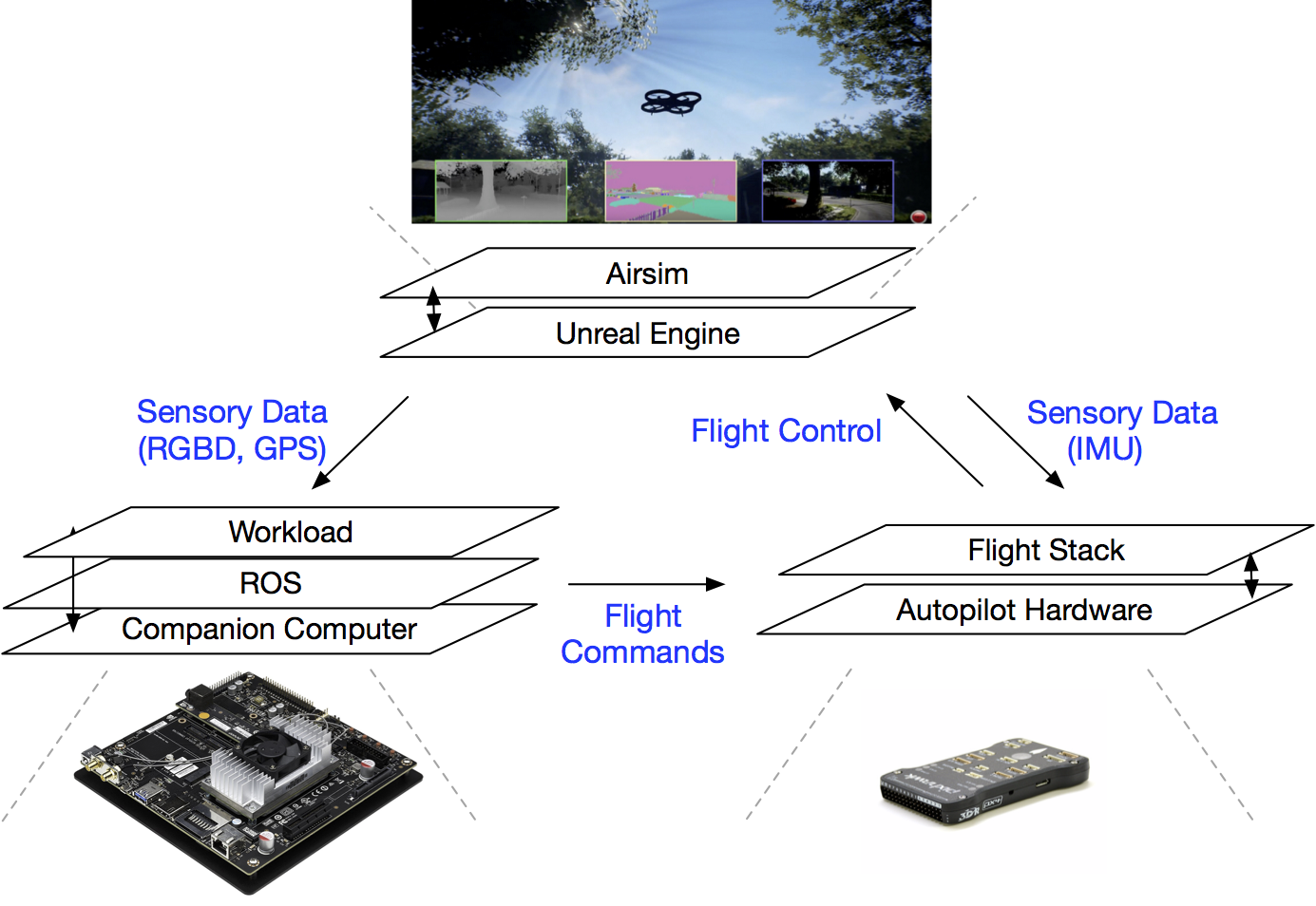MAVBench is a framework targeting design and development of Micro Aerial Vehicles for hardware/software designers and roboticists. It consists of the following two components:
- a closed-loop simulator
- an end-to-end application benchmark suite.
Simulators are at the heart of computer architecture research. As autonomous vehicles emerge as the next major horizon of computing, a closed-loop simulation platform is needed to probe and understand the intra-system (application data flow) and inter-system (system and environment) interactions in MAV applications to pinpoint bottlenecks and identify opportunities for hardware and software co-design and optimization.

|
In addition to the simulator, MAVBench provides a benchmark suite, the first of its kind, consisting of a variety of MAV applications designed to enable computer architects to perform characterization and develop future aerial computing systems. Benchmarks are at the heart of computer architecture research, and without them it becomes hard to do systematic research at different levels of the system stack. To this end, the benchmark suite is designed to co-exist with the simulation infrastructure to enable end to end computer architecture studies, starting from analyzing application behavior to optimizing the system with the full application in mind, rather than focusing on individiual, isolated computational kernels.

|
